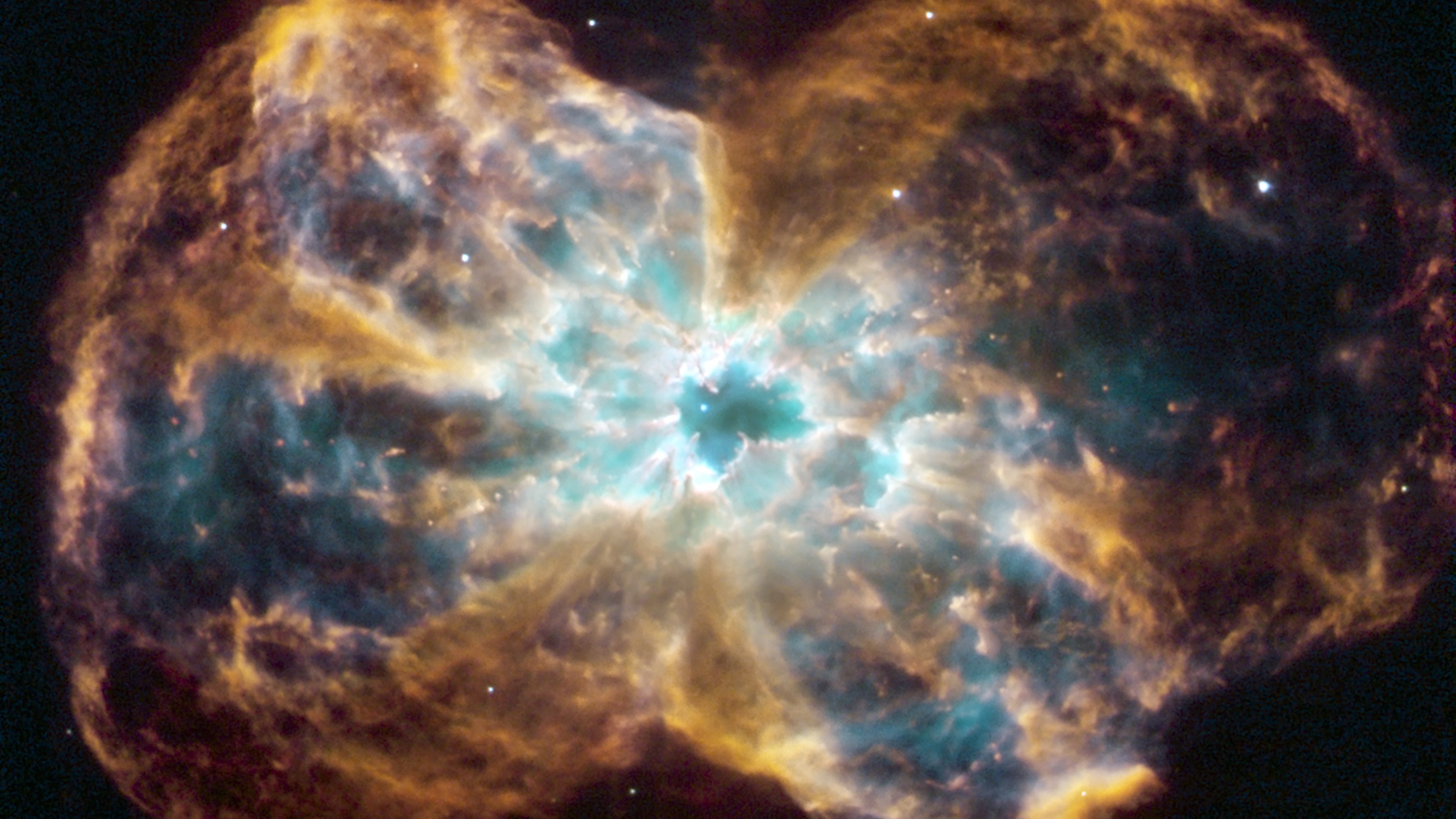The universe may be dying much faster than we thought
Astrophysicists have proposed a new theoretical maximum lifespan for the universe, which suggests that dead stars are decaying much faster than previously thought. The estimate of stellar remnant decay is based on Stephen Hawking's famous black hole radiation theory.

Our universe could be dying much faster than scientists thought, but it's still going to be around for a mind-bogglingly long time, a new study finds.
Researchers have proposed an updated theoretical maximum lifespan for the universe based on Stephen Hawking's most famous prediction about black holes: that they will eventually evaporate. The new estimate suggests that most remnants of the last stars will die after around 1 quinvigintillion years — that's 1 followed by 78 zeros, or 1078.
So, the universe will theoretically come to an end in around 1,000,000,000,000,000,000,000,000,000,000,000,000,000,000,000,000,000,000,000,000,000,000,000,000,000,000 years — just in case you want to set an alarm.
A quinvigintillion years might seem like an absurdly long time, but it's actually much quicker than the old upper estimate for stellar remnant decay. The original estimate was 101,100 years — picture the number above with another 1,022 zeros. The new 1078 estimate is so much sooner, it reduces the timeframe by an effectively inconceivable amount of time.
The new findings, published Monday (May 12) in the Journal of Cosmology and Astroparticle Physics, provide only a potential upper age limit for stellar remnants, and there's no guarantee our universe will last anywhere near that long. However, the study does help underline that all things will perish, eventually.
"Everything will decay, but there is still a lot of time left to do great things," study first author Heino Falcke, a professor of astrophysics at Radboud University in the Netherlands, told Live Science in an email.
Get the world’s most fascinating discoveries delivered straight to your inbox.
How universes die
Stars run out of fuel and die, but they don't completely disappear. Small to medium-sized stars like our sun shed their atmospheres during their dying days and leave behind a cooling core, or white dwarf. The most massive stars meet a more violent end by exploding in a supernova, leaving behind smaller and denser cores, called neutron stars, or collapsing in on themselves to form black holes. These objects are called stellar remnants.
In 1974, Hawking proposed that black holes would slowly evaporate by losing energy through a kind of radiation, which became known as Hawking radiation. Quantum field theory, based on quantum mechanics, posits that the vacuum of space is filled with tiny vibrations that can, with enough energy, randomly create virtual particles that produce a small amount of light, called photons. Hawking proposed that the gravitational forces at the mouth of a black hole could create photons, which would subsequently drain the black hole of energy, and eventually cause it to disappear.
Almost 50 years later, a team in the Netherlands proposed that all objects with enough mass could decay in much the same way as a black hole, including neutron stars and white dwarfs. In the new study, the same researchers estimated how long it would take the Hawking radiation-like process, called gravitational pair production, to kill off all of the stellar remnants based on their previous assumptions and the masses of different objects.
The researchers concluded that neutron stars would evaporate after around 1068 years, which is a similar timescale to black holes, while white dwarfs would survive for up to 1 quinvigintillion (1078) years. Supermassive black holes might survive even longer than 1 quinvigintillion years, with a potential lifespan of 1096 years, according to the study. All galaxies should have run out of material for star formation by then, which would effectively leave nothing left in the universe.

The new findings are based purely on how long it would take stellar remnants to evaporate. Even if the researchers' theory is correct, the universe won't necessarily live that long. And our current view of the universe will go dark long before then — based on researchers' current understanding of cosmology, the universe will expand so fast in the next 150 to 200 billion years that most galaxies will no longer be visible to us, Falcke said.
"All we [will] see of the universe then are the stars in our own Galaxy," Falcke said. "In about 17 trillion years the last stars will have died."
Scientists predict that our sun will expand, engulf Earth and die in around 5 billion years, so this solar system will be uninhabitable eons before the rest of the stars die. Once all of the stars are dead, a hypothetical form of particle decay (proton decay) could also bring everything else to a close before the Hawking-inspired stuff puts the final nail in our universe's coffin. Falcke noted that there is currently only a lower limit of 1034-35 years for protein decay, if it exists at all.
Alex Richings, a lecturer in the E. A. Milne Centre for Astrophysics at the University of Hull in the U.K. who was not involved in the study, described the new stellar remnant research as "very fascinating."
"We typically think of these objects as being the end point of a star's evolution, that will remain forever," Richings told Live Science in an email. "However, the authors of this study demonstrate that these remnants have a maximum possible lifetime, as they will continue to decay via emission through gravitational pair production, a process similar to Hawking radiation in black holes."

Patrick Pester is the trending news writer at Live Science. His work has appeared on other science websites, such as BBC Science Focus and Scientific American. Patrick retrained as a journalist after spending his early career working in zoos and wildlife conservation. He was awarded the Master's Excellence Scholarship to study at Cardiff University where he completed a master's degree in international journalism. He also has a second master's degree in biodiversity, evolution and conservation in action from Middlesex University London. When he isn't writing news, Patrick investigates the sale of human remains.
You must confirm your public display name before commenting
Please logout and then login again, you will then be prompted to enter your display name.


